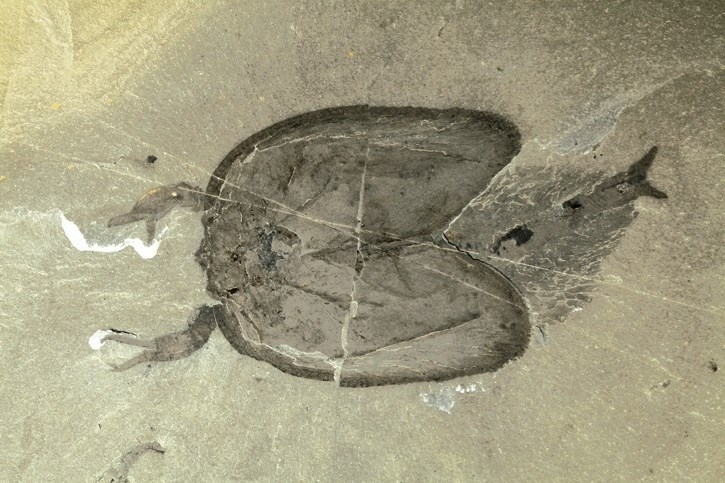A fossilized creature discovered in 2014 in the Burgess Shale beds of Kootenay National Park has helped paleontologists understand the origin of ants, crabs and centipedes.
Cédric Aria and Jean-Bernard Caron, writing in the current issue of the scientific journal Nature, trace the ancestor of mandibulates, a sub-group of arthropods, to Tokummia katalepsis, a crustacean-like animal with a segmented body, carapace, serrated mandibles and pincers shaped like can openers.
“The pincers of Tokummia are large, yet also delicate and complex, reminding us of the shape of a can opener, with their couple of terminal teeth on one claw, and the other being curved towards them,” said Aria, a post-doctoral researcher at the Nanjing Institute for Geology and Paleontology, in China, in a recent release from the Royal Ontario Museum.
“But we think (the pincers) might have been too fragile to be handling shelly animals, and might have been better adapted to the capture of sizable soft prey items, perhaps hiding away in mud. Once torn apart by the spiny limb bases under the trunk, the mandibles would have served as a revolutionary tool to cut the flesh into small, easily digestible pieces.”
The 10 centimetre long predator, while small by today’s standards, would have been a terror of the seas when it lived 508 million years ago, given that most creatures alive at that time were much smaller, often measuring in millimetres.
Burgess Shale deposits in Yoho and Kootenay national parks are a rare and unique resource as many of the fossilized creatures found in these sites are so well preserved researchers can see minute details, including organs.
As a result, the Marble Canyon site, discovered in 2012, has helped researchers solve several evolutionary riddles while offering up new creatures and species on a regular basis.
And the question of how mandibulates developed has proven particularly thorny, despite the success of this group and the millions of species that are a part of it.
“In spite of their colossal diversity today, the origin of mandibulates had largely remained a mystery,” said Aria. “Before now we’ve had only sparse hints at what the first arthropods with mandibles could have looked like, and no idea of what could have been the other key characteristics that triggered the unrivalled diversification of that group.”
Along with its mandibles and pincers, Tokummia also features a hardened and segmented exoskeleton, a carapace and segmented limbs, and it appears to have hunted along the bottom of the sea.
“This spectacular new predator, one of the largest and best preserved soft-bodied arthropods from Marble Canyon, joins the ranks of many unusual marine creatures that lived during the Cambrian Explosion, a period of rapid evolutionary change starting about half a billion years ago when most major animal groups first emerged in the fossil record,” said co-author Jean-Bernard Caron, senior curator of invertebrate paleontology at the ROM.
Tokummia, which is named after Tokumm Creek in Kootenay, also helped Aria and Caron to fix several other Burgess Shale fossil creatures alongside Tokummia at the base of the mandibulate tree.
“Our study suggests that a number of other Burgess Shale fossils such as Branchiocaris, Canadaspis and Odaraia form with Tokummia a group of crustacean-like arthropods that we can now place at the base of all mandibulates,” said Aria.




